Hibernate实战——基于复合主键的关联关系
一 配置文件
<?xml version="1.0" encoding="GBK"?><!-- 指定Hibernate配置文件的DTD信息 --><!DOCTYPE hibernate-configuration PUBLIC"-//Hibernate/Hibernate Configuration DTD 3.0//EN""http://www.hibernate.org/dtd/hibernate-configuration-3.0.dtd"><!-- hibernate-configuration是配置文件的根元素 --><hibernate-configuration><session-factory><!-- 指定连接数据库所用的驱动 --><property name="connection.driver_class">com.mysql.jdbc.Driver</property><!-- 指定连接数据库的url,其中hibernate是本应用连接的数据库名 --><property name="connection.url">jdbc:mysql://localhost/hibernate</property><!-- 指定连接数据库的用户名 --><property name="connection.username">root</property><!-- 指定连接数据库的密码 --><property name="connection.password">32147</property><!-- 指定连接池里最大连接数 --><property name="hibernate.c3p0.max_size">20</property><!-- 指定连接池里最小连接数 --><property name="hibernate.c3p0.min_size">1</property><!-- 指定连接池里连接的超时时长 --><property name="hibernate.c3p0.timeout">5000</property><!-- 指定连接池里最大缓存多少个Statement对象 --><property name="hibernate.c3p0.max_statements">100</property><property name="hibernate.c3p0.idle_test_period">3000</property><property name="hibernate.c3p0.acquire_increment">2</property><property name="hibernate.c3p0.validate">true</property><!-- 指定数据库方言 --><property name="dialect">org.hibernate.dialect.MySQL5InnoDBDialect</property><!-- 根据需要自动创建数据库 --><property name="hbm2ddl.auto">update</property><!-- 显示Hibernate持久化操作所生成的SQL --><property name="show_sql">true</property><!-- 将SQL脚本进行格式化后再输出 --><property name="hibernate.format_sql">true</property><!-- 罗列所有持久化类的类名 --><mapping class="org.crazyit.app.domain.Person"/><mapping class="org.crazyit.app.domain.Address"/></session-factory></hibernate-configuration>
二 PO
Person
package org.crazyit.app.domain;import java.util.*;import javax.persistence.*;@Entity@Table(name="person_inf")public class Personimplements java.io.Serializable{// 定义first成员变量,作为标识属性的成员@Idprivate String first;// 定义last成员变量,作为标识属性的成员@Idprivate String last;private int age;// 记录该Person实体关联的所有Address实体@OneToMany(targetEntity=Address.class, mappedBy="person", cascade=CascadeType.ALL)private Set<Address> addresses= new HashSet<>();// first的setter和getter方法public void setFirst(String first){this.first = first;}public String getFirst(){return this.first;}// last的setter和getter方法public void setLast(String last){this.last = last;}public String getLast(){return this.last;}// age的setter和getter方法public void setAge(int age){this.age = age;}public int getAge(){return this.age;}// addresses的setter和getter方法public void setAddresses(Set<Address> addresses){this.addresses = addresses;}public Set<Address> getAddresses(){return this.addresses;}// 重写equals()方法,根据first、last进行判断public boolean equals(Object obj){if (this == obj){return true;}if (obj != null && obj.getClass() == Person.class){Person target = (Person)obj;return target.getFirst().equals(this.first)&& target.getLast().equals(this.last);}return false;}// 重写hashCode()方法,根据first、last计算hashCode值public int hashCode(){return getFirst().hashCode() * 31+ getLast().hashCode();}}
Address
package org.crazyit.app.domain;import javax.persistence.*;@Entity@Table(name="address_inf")public class Address{// 标识属性@Id @Column(name="address_id")@GeneratedValue(strategy=GenerationType.IDENTITY)private int addressId;// 定义代表地址详细信息的成员变量private String addressDetail;// 记录该Address实体关联的Person实体@ManyToOne(targetEntity=Person.class)// 使用@JoinColumns包含多个@JoinColumn定义外键列@JoinColumns({// 由于主表使用了复合主键(有多个主键列)// 因此需要使用多个@JoinColumn定义外键列来参照person_inf表的多个主键列@JoinColumn(name="person_first", referencedColumnName="first" , nullable=false),@JoinColumn(name="person_last", referencedColumnName="last" , nullable=false)})private Person person;// 无参数的构造器public Address(){}// 初始化全部成员变量的构造器public Address(String addressDetail){this.addressDetail = addressDetail;}// addressId的setter和getter方法public void setAddressId(int addressId){this.addressId = addressId;}public int getAddressId(){return this.addressId;}// addressDetail的setter和getter方法public void setAddressDetail(String addressDetail){this.addressDetail = addressDetail;}public String getAddressDetail(){return this.addressDetail;}// person的setter和getter方法public void setPerson(Person person){this.person = person;}public Person getPerson(){return this.person;}}
三 测试
1 工具类
package lee;import org.hibernate.*;import org.hibernate.cfg.*;import org.hibernate.service.*;import org.hibernate.boot.registry.*;public class HibernateUtil{public static final SessionFactory sessionFactory;static{try{// 使用默认的hibernate.cfg.xml配置文件创建Configuration实例Configuration cfg = new Configuration().configure();// 以Configuration实例来创建SessionFactory实例ServiceRegistry serviceRegistry = new StandardServiceRegistryBuilder().applySettings(cfg.getProperties()).build();sessionFactory = cfg.buildSessionFactory(serviceRegistry);}catch (Throwable ex){System.err.println("Initial SessionFactory creation failed." + ex);throw new ExceptionInInitializerError(ex);}}// ThreadLocal可以隔离多个线程的数据共享,因此不再需要对线程同步public static final ThreadLocal<Session> session= new ThreadLocal<Session>();public static Session currentSession()throws HibernateException{Session s = session.get();// 如果该线程还没有Session,则创建一个新的Sessionif (s == null){s = sessionFactory.openSession();// 将获得的Session变量存储在ThreadLocal变量session里session.set(s);}return s;}public static void closeSession()throws HibernateException{Session s = session.get();if (s != null)s.close();session.set(null);}}
2 测试类
package lee;import org.hibernate.Transaction;import org.hibernate.Session;import java.util.*;import org.crazyit.app.domain.*;public class PersonManager{public static void main(String[] args){PersonManager mgr = new PersonManager();mgr.createAndStorePerson();HibernateUtil.sessionFactory.close();}private void createAndStorePerson(){Session session = HibernateUtil.currentSession();Transaction tx = session.beginTransaction();// 创建Person对象Person person = new Person();person.setAge(29);// 为复合主键的两个成员设置值person.setFirst("crazyit.org");person.setLast("疯狂Java联盟");Address a1 = new Address("广州天河");a1.setPerson(person);Address a2 = new Address("上海虹口");a2.setPerson(person);// 先保存主表实体session.save(person);// 再保存从表实体session.save(a1);session.save(a2);tx.commit();HibernateUtil.closeSession();}}
四 测试
Hibernate:insertintoperson_inf(age, last, first)values(?, ?, ?)Hibernate:insertintoaddress_inf(addressDetail, person_last, person_first)values(?, ?, ?)Hibernate:insertintoaddress_inf(addressDetail, person_last, person_first)values(?, ?, ?)
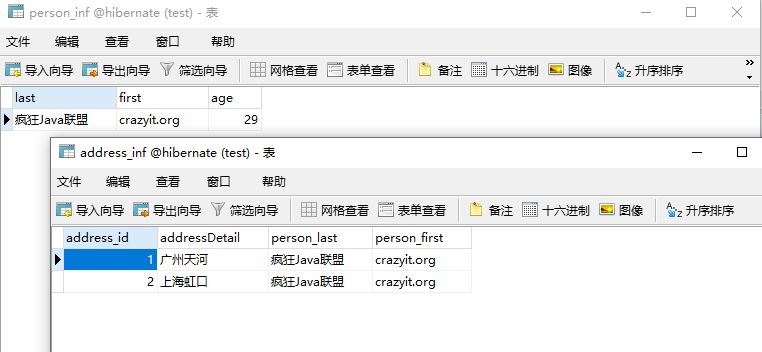
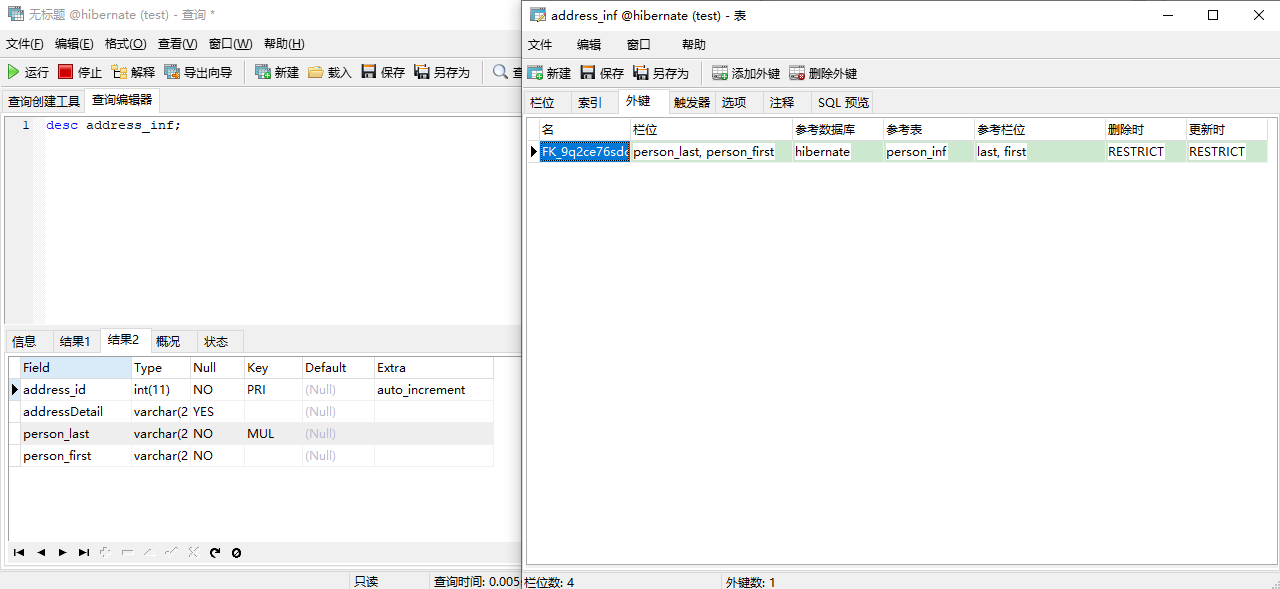



























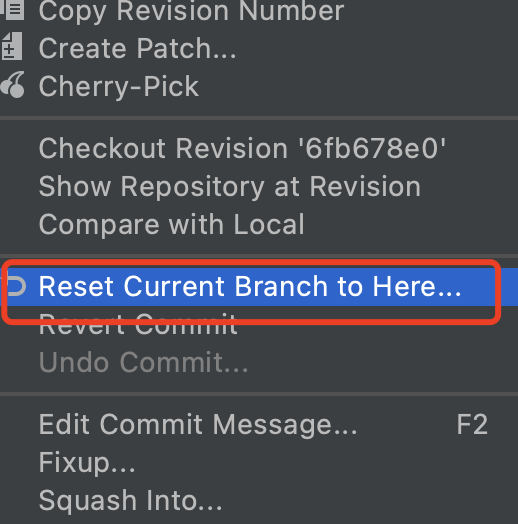
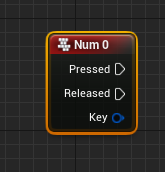

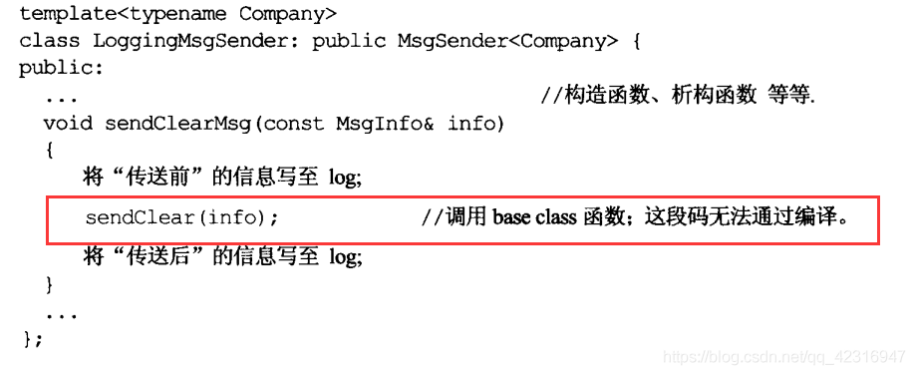




还没有评论,来说两句吧...